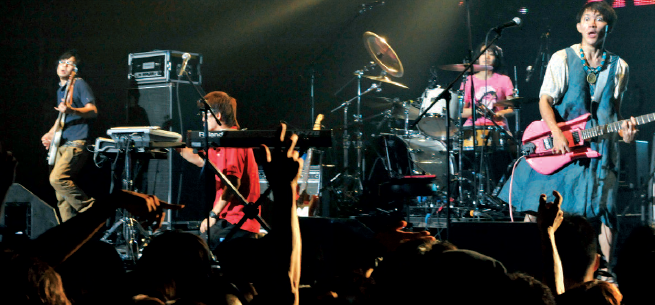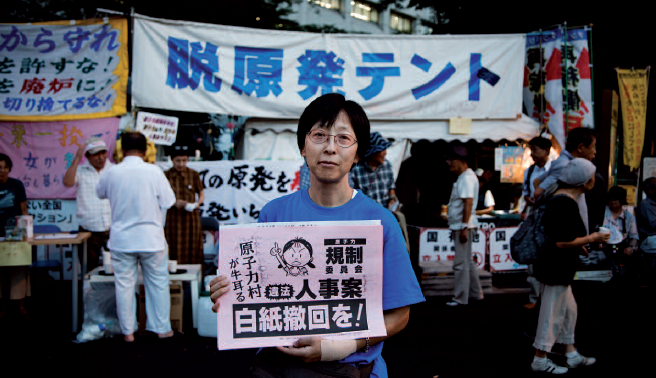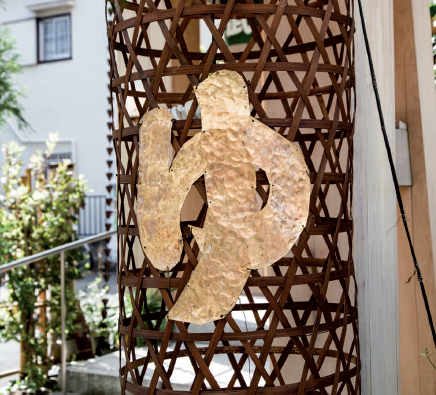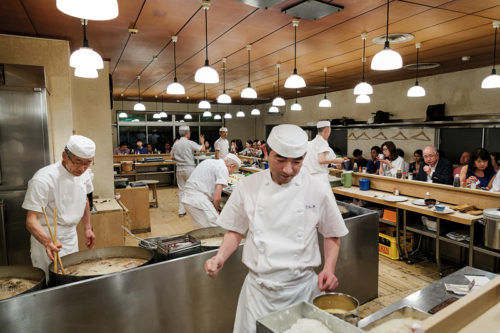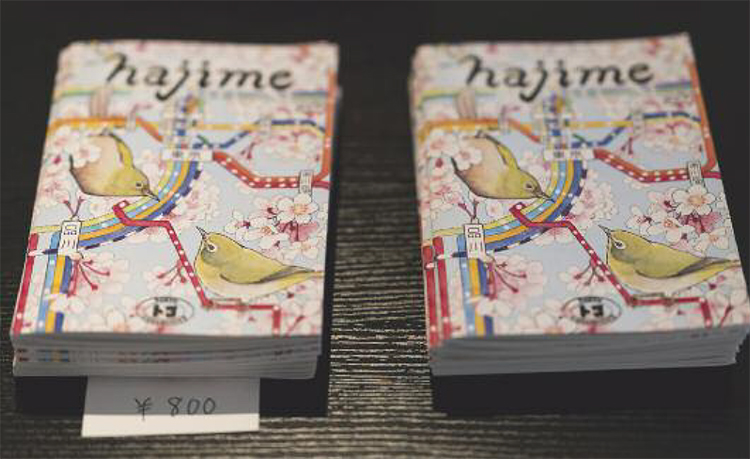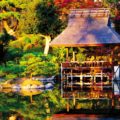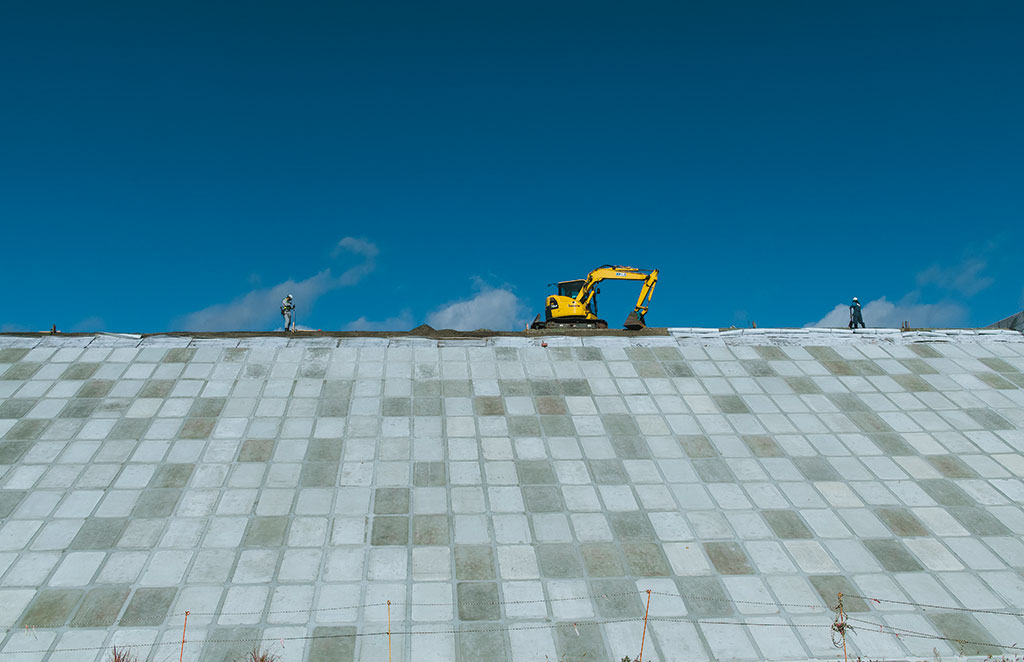

Workers at the dam construction site in Miyako, Iwate Prefecture.
To avoid a recurrence of the 11 March 2011 tragedy, the Japanese authorities have undertaken the construction of a gigantic concrete barrier to prevent tsunamis.
It is 14:46 on 11 March 2011, and half of Japan is shaking as a long and powerful seismic tremor hits the north-east coast of the country. The Great East Japan Earthquake of 11 March was the most powerful quake ever recorded in Japan, and the fourth most powerful earthquake the world has felt since modern records began in 1900. Following this huge tremor, a gigantic tsunami struck the north-east region of Tohoku killing almost 15,000 people and leaving 2,500 more missing. “3.11” was the largest natural catastrophe to hit Japan since the 1995 Kobe earthquake.
This year is the tenth anniversary of the quake, and reconstruction efforts in the Tohoku area continue. Whole towns and their communities are slowly being rebuilt. Some are relocating further inland, away from the ocean. Others, like the town of Onagawa in Miyagi Prefecture, have decided to build their new houses and offices on a series of artificial plateaus – huge flat-topped hills, which it is hoped will keep the new towns out of danger. At sea level, as a reminder of the tragedy, are the remains of a ruined house at the side of new road next to a convenience store.
One of the biggest projects underway, however, is a seawall and wave barrier, which is already being called the “The Great Wall of Japan”. Stretching some 432 kilometers from the northern prefecture of Iwate to Fukushima Prefecture in the south, and reaching a height of 15.5 metres at some points, the “Great Wall” has become a concrete link between the prefectures and their shared memories of the 3.11 disaster. Though it will help protect communities from future threats, the wall is unsightly and cuts its way haphazardly through the landscape, separating the fishing villages from the sea and destroying the surrounding countryside. To date, the cost of this huge project is estimated to be around 9,2 billion pounds. Everyday, almost 10 years after the disaster, heavy duty trucks can be seen trailing along the coast roads of Miyagi and Iwate transporting soil, sand and other materials for the wall’s construction. Wherever you arrive in port along this coast, you are greeted by the same sight: a light grey barrier running along the sea’s edge. In some places it’s higher than others, sometimes it’s a steep slope, sometimes a huge sheer wall, but it has just one purpose: to protect people from tsunamis.
The main idea behind building the seawall is protection as well as slowing the speed of a large wave, to “gain some precious seconds or minutes in the event of a major tsunami”. This human-made barrier can hold back the sea, but also helps reduce the power of the wave and delay the flooding. In 2011, some people might have survived with an extra couple of minutes leeway.
A large majority of coastal towns (with the support of residents) voted for the construction of the wall. One of the conditions of the plan to rebuild houses in some towns was the construction of a seawall before starting to rebuild private homes. But some residents disagree. They understand that the wall can protect them, but fear that their connection to the sea will be severed and they could lose the ability to recognise when the sea poses a threat. They worry that in the case of another major earthquake they will not be able to spot changes in the sea’s character or notice the water receding rapidly, which heralds a potential tsunami. When they see some of the small window- like openings along the top of this high wall, they think “Is this some kind of cynical joke against us?”.
Akahama in Otsuchi, Iwate Prefecture, is the area closest to the sea. It’s also where, a ship notoriously crashed onto the roof of a building after being swept ashore by 22-metre-high waves – one of the most iconic images of the tsunami. The residents insist that homes in the district should be moved to higher ground instead. They say that a 14.5-metre seawall would not only provide inadequate protection against another big tsunami, it would obscure their view of the ocean. Most of Akahama’s residents work in the fishing industry and fear being cut off from their livelihood.
Taro town seawall falls
Taro is a small town in Iwate Prefecture where many depend on the sea for their livelihood. It is a small isolated fishing port in a bay, and like other fishing ports in the Sanriku area in Tohoku, tsunamis and the dangers posed by the sea feature large in their local stories. Walking in the hills surrounding the village you will find small Shinto shrines in different places indicating where, in the past, the floodwaters from a tsunami reached… if the shrine was not swept away. Throughout its history, Taro has been destroyed four times by tsunamis : in 1611, 1896, 1933 and 2011. Due to its history of repeated destruction by huge waves, a double seawall in the form of an “X-shaped” structure was constructed to protect the town. This seawall became world-famous as the perfect prototype for “a human construction against tsunamis”. The X wall was 2.4 kilometers long and 10 metres high, known as “Banri no Chojo” (Great Wall of China in Japanese), and could stop a 8-metre-high tsunami. Unfortunately, in a sad example of our inability to control nature, Taro was hit by a tsunami of between 12 and 15 metres high in March 2011. The natural power of the wave tore away 500 metres from some parts of the “Banri no Chojo”. Confident about the protection offered by the wall, some Taro residents climbed the wall on 11 March to “watch the wave” coming in. This resulted in 181 death or missing.
Four years after the tsunami, on 22 November 2015, a “town opening” ceremony was held in Taro after the completion of 450 new houses. They were built between 40 and 60 metres above sea level. Taro’s part of the “Great Seawall of Japan” is a 14.7-metre-high wall to protect the bay from tsunamis. Next to the municipal baseball field where the local team play and young kids practise, a section of Taro’s old, partially destroyed seawall can be seen. Some parts of the wall have been rebuilt, others are used as a “memorial” to how useless it proved against the powerful waves that struck the town on that cold Friday afternoon.
Tonnes of concrete in the natural environment
One of the arguments put forward by residents and people against the construction of this seawall was its effect on the natural environment of the coastal area. The Sanriku coastal area (from Iwate to the northern part of Miyagi Prefecture) is famous for its wild and beautiful landscape with its jagged rock formations running alongside the Pacific Ocean, where land and sea meet at the foot of a huge cliff. The impact of this seawall, which runs for kilometres through this natural wild landscape in north Japan, still poses an environmental problem for the locals.
In a position paper, HIrOSHIGE Takashi from Waseda University explained that the wall will have an effect on “the fixed position of the coastline”. He also notes that some city authorities have decided to lower the height of the wall in areas with no worthwhile assets behind it to protect.
In a long research paper entitled “The Coastal Environment and the reconstruction Process after the Great East Japan Earthquake” (2018), Vincent Santiago Fandino and Erick Mas note the different points where the wall could have an effect on the coastal area not only environmentally but economically. The two researchers think that the wall could stop or slow down the geomorphology and changes in the sea level because it will block interaction between the sea and the shoreline. They also point out in their paper that “the seawall will have an impact on the transportation of sediments, and coastal erosion”. This will result in a major impact on water flow and the movement of nutrients with consequences for biodiversity. The wall will also have an impact on the wildlife that regularly visits the shore at night. In their article, Fandino and Mas also write, “Finally, the structures are in general aesthetically displeasing and heavily impacting tourism activities while also detaching the local community from the sea.”
Ten years after the incredible images of total devastation, the northern part of Japan can see a light at the end of the tunnel. Of course, the tragedy of loved ones who perished in this disaster is still felt, but the completion of the reconstruction will give the towns and their inhabitants a new start. The wall is a reminder of what happened and how powerful and uncontrollable nature can be. The seawall is now an integral part of the northern coastal landscape, and for people living in the vicinity of the “Great Seawall of Japan” it has become part of everyday life.
This Tohoku coastal area project has already inspired other parts of Japan. This year, in the city of Hamamatsu in Shizuoka Prefecture, the government has just finished building a titanic seawall 15 metres high and 17.5 kilometres long. The city of Hamamatsu is high on the “waiting list” of local areas at risk due to the probability of a severe Nankai Trough earthquake hitting the Kanto area sometime soon.
NICOLAS DATICHE

